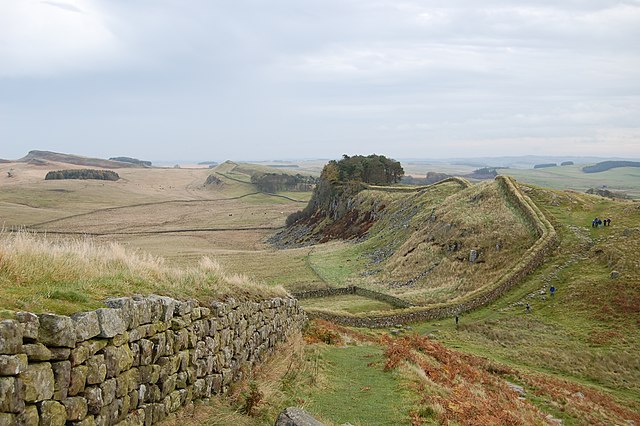
Hadrian’s Wall
The Roman emperor Hadrian died on the 10th of July 138 CE, but despite having died nearly 2000 years ago, his legacy, and much of Hadrian’s wall, remains.
Under the order of the emperor Julius Caesar, the Romans first invaded Britain in 55 BCE when the islands were inhabited and governed by various Celtic tribes. The invasion was unsuccessful but in 43 CE, under the emperor Claudius, the Romans tried again. Claudius sent around 24,000 soldiers to Britain and by 79 CE, the Romans had gained control of the area that is now Wales and Southern England. However, over the course of the following decades, despite numerous attempts, they were unable to gain control of northern England and Scotland. Roman soldiers were repeatedly met with fierce resistance by the region’s native warriors and could not establish any foothold there. In fact, by the time the emperor Hadrian came to power in 117 CE, Rome had given up on gaining Scotland. Instead, Hadrian turned his attention to protecting what the empire already had – in his own words he wanted to “separate Romans from the barbarians” in the north. And so, during a visit to Britain in 122 CE, he ordered the governors of Roman Britain to build a wall. It is a misconception that Hadrian’s wall forms the boundary between Scotland and England. Instead, it served as the north-west boundary of the Roman empire, stretching 73 miles across northern England from the River Tyne near Newcastle in the east to Bowness-on-Solway in the west.
How Big Was Hadrian’s Wall?
It took around six years to complete the wall, with legions of Roman soldiers providing the labour. The wall was built from east to west and was largely made of stone, apart from a 30-mile section to the east which was turf. The stone wall was around 3 metres wide and reached up to 4.6 metres high, whilst the eastern turf section was 6 metres wide. To the northern side of the wall a wide deep ditch was dug and at every mile a gate was installed. Each gate was protected by a small guard post known as a milecastle, and there were two observation towers in between each gate. A large mound of earth, known as the Vallum, to the south of the wall provided additional defence.
The wall was manned by regiments of infantry and cavalry, each consisting of up to 1000 men, most of whom were recruited from the north-western provinces of the Roman empire. They were accompanied by camp followers, mostly merchants who sought to provide essential services to the troops, and archaeological excavation around the wall has provided evidence of civic settlements which date back to the 3rd century.
The Swift Rise And Fall Of The Antonine Wall
Shortly after Hadrian’s death, his wall was abandoned as the new emperor, Antoninus Pius, sought to build a new wall 100 miles further north in Scotland. But the Antonine Wall was quickly deserted as it became apparent that the Roman soldiers could not defeat the northern tribes. Roman troops returned to Hadrian’s Wall which served as the north-west frontier of the Roman empire for the next 300 years.
The Wall After The Empire
After the fall of the Roman empire, much of the wall was quarried for stone until John Clayton’s intervention during the mid-19th century. As a historian, Clayton had begun to study the wall and sought to protect its remains. He began purchasing the land surrounding the walls, establishing farms there and using the profits from the farms to fund restoration work on the wall. Whilst much of this land was lost after Clayton’s death in 1890, following in his footsteps, the National Trust began re-acquiring the land in the 20th century. Hadrian’s Wall was named a UNESCO World Heritage site in 1987 and is an incredibly popular tourist attraction today. To learn more about Hadrian’s Wall visit Hadrian’s Wall at the World History Encyclopedia website or Hadrian’s Wall – Location, Construction & Significance at History.com.